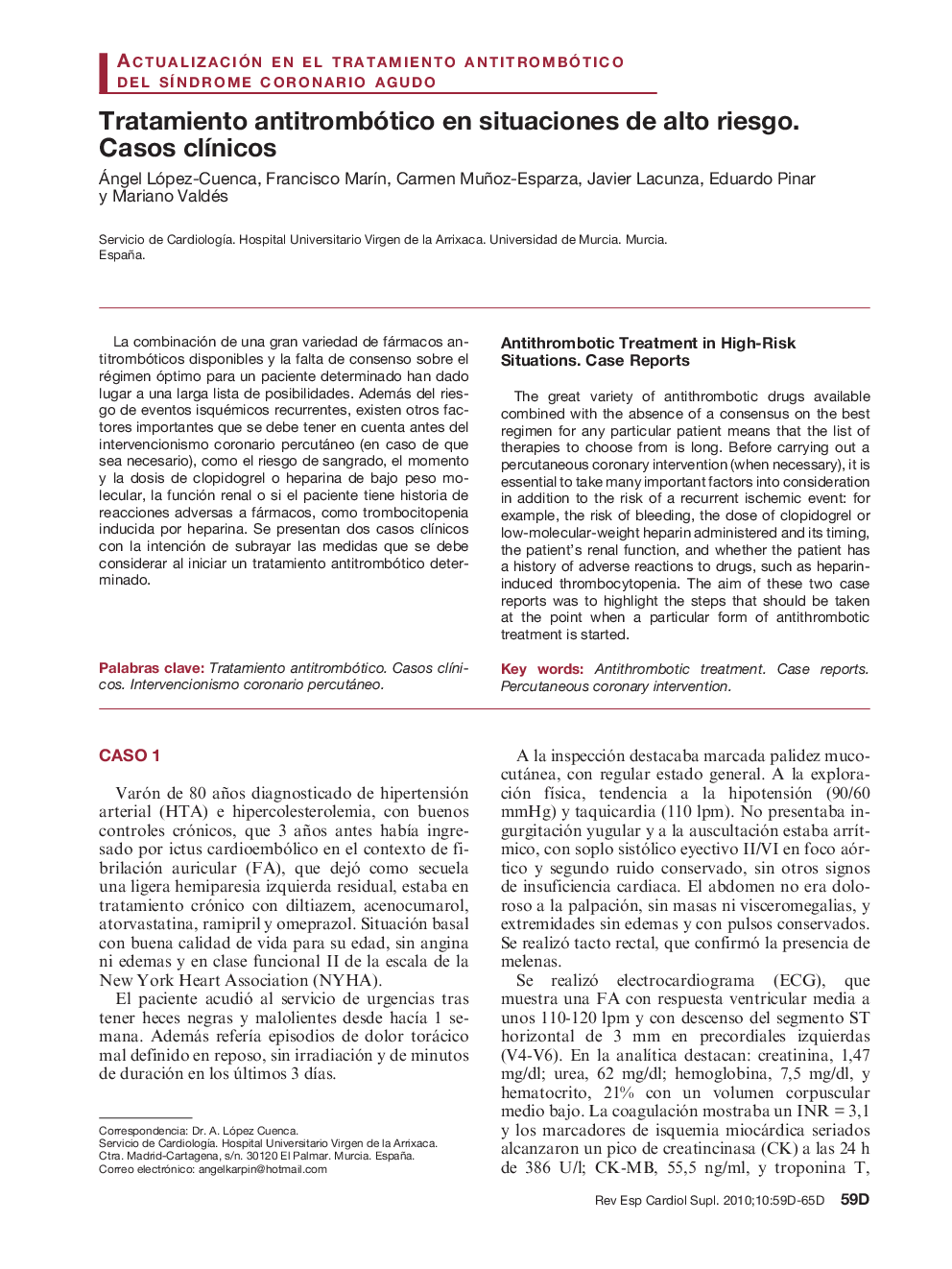| Article ID | Journal | Published Year | Pages | File Type |
|---|---|---|---|---|
| 3019490 | Revista Española de Cardiología Suplementos | 2010 | 7 Pages |
Abstract
The great variety of antithrombotic drugs available combined with the absence of a consensus on the best regimen for any particular patient means that the list of therapies to choose from is long. Before carrying out a percutaneous coronary intervention (when necessary), it is essential to take many important factors into consideration in addition to the risk of a recurrent ischemic event: for example, the risk of bleeding, the dose of clopidogrel or low-molecular-weight heparin administered and its timing, the patient's renal function, and whether the patient has a history of adverse reactions to drugs, such as heparin-induced thrombocytopenia. The aim of these two case reports was to highlight the steps that should be taken at the point when a particular form of antithrombotic treatment is started.
Keywords
Related Topics
Health Sciences
Medicine and Dentistry
Cardiology and Cardiovascular Medicine
Authors
Ángel López-Cuenca, Francisco MarÃn, Carmen Muñoz-Esparza, Javier Lacunza, Eduardo Pinar, Mariano Valdés,
